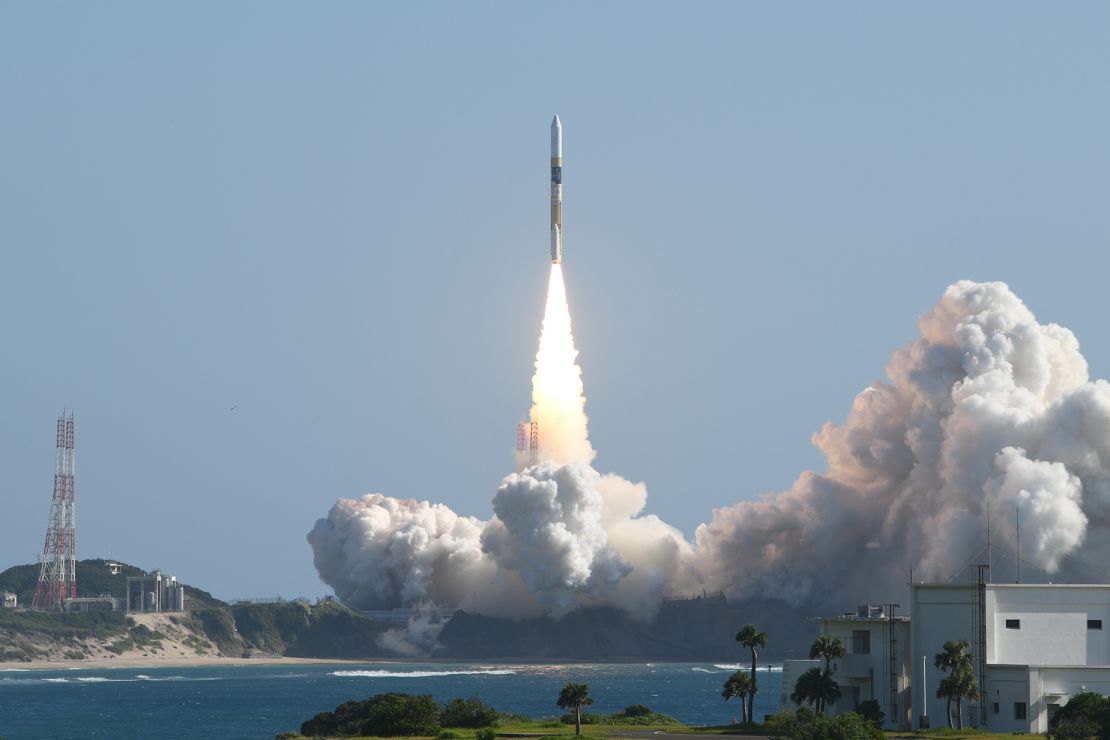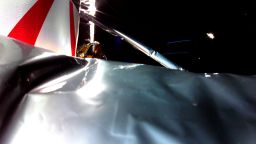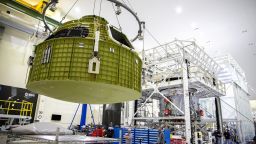Sign up for CNN’s Wonder Theory science newsletter. Explore the universe with news on fascinating discoveries, scientific advancements and more.
As the first US lunar lander mission in decades ends without reaching its target, a spacecraft that Japan launched is drawing closer to the moon and preparing for a historic landing attempt.
The Japan Aerospace Exploration Agency’s Smart Lander for Investigating Moon, or SLIM, is expected to touch down on the lunar surface at 10:20 a.m. ET Friday, or 12:20 a.m. Saturday Japan Standard Time. If successful, SLIM’s landing will mark Japan’s first time putting a robotic explorer on the moon’s surface — and make it the third country to achieve such a feat in the 21st century, and the fifth country to soft-land a spacecraft on the moon since the Soviet Luna 9 mission in 1966.
The spacecraft, also nicknamed the “Moon Sniper” for its precision technology, will begin its descent toward the lunar surface at 10 a.m. ET. The landing will be streamed live on YouTube in Japanese and English.
“The start of the deceleration to the landing on the Moon’s surface is expected to be a breathless, numbing 20 minutes of terror,” said Kenji Kushiki, the subproject manager of the SLIM mission, in a statement.
The small-scale exploration lander is designed to demonstrate a “pinpoint” landing at a specific location.
Other lunar landings, including NASA’s Apollo missions, achieved extreme accuracy in reaching a specific zone, but SLIM’s technology aims to bring precision to robotic probes that are low-cost and lightweight. The hope, according to JAXA, is that the technology will make it possible for the small lander to target specific sites on the moon, allowing SLIM to land even among treacherous, rocky terrain.
If successful, the technology could allow future missions “to land on planets even more resource scarce than the moon,” according to the space agency.
“Nowadays, there has been an increase in the knowledge of target astronomical objects and the details which should be studied have grown more specific so that high accuracy landings near the target of study have become necessary,” according to JAXA.
The SLIM lander will target a landing site that stretches just 100 meters (328 feet) across. By comparison, Astrobotic Technology’s Peregrine lunar lander — which became the first US lunar lander to launch in more than 50 years — was targeting a landing zone that spanned a few kilometers before a fuel leak forced the spacecraft to abandon its mission.
If SLIM misses this window to attempt a landing, it will have another opportunity on February 16.

Moon Sniper’s journey
The SLIM lander launched in September alongside the XRISM satellite (pronounced “crism”), also called the X-Ray Imaging and Spectroscopy Mission, a joint mission between JAXA and NASA. Following the launch, SLIM used its own propulsion system to head toward the moon. The spacecraft successfully entered an oval-shaped lunar orbit on Christmas Day.
Since entering an orbit that passes the moon’s north and south poles, the lander has been moving closer and closer to the moon’s surface.
If the spacecraft touches down successfully, it will briefly study the lunar surface just south of a dark spot on the moon called the Sea of Tranquility, the region where Apollo 11 landed in 1969.

Unlike other recent robotic missions aiming for the moon’s south pole, SLIM is targeting a site near a small lunar impact crater called Shioli, within a plain known as the Sea of Nectar that scientists suspect was formed by ancient volcanic activity. There, it will investigate the composition of rocks that may help scientists uncover the origins of the moon.
“A closer look at such minerals could reveal information about the Moon’s interior structure and formation,” according to JAXA. “However, sites of crater ejecta are usually avoided due to the difficulty of landing within a small ejecta strewn area on the sloped sides surrounding a crater.”
The SLIM probe has vision-based navigation technology, which JAXA refers to as “smart eyes.” The spacecraft will capture photographs of the moon’s surface as it approaches and rapidly pinpoint the vehicle’s location on maps previously sketched out by lunar satellites, autonomously adjusting its trajectory as it swoops in for landing.
Kushiki said in those final moments, the SLIM lander will be constantly pulled toward the lunar surface by the moon’s gravity, requiring the spacecraft’s engines to fire continuously.
The “landing is a one-shot game that cannot be undone,” he added.
A new lunar space race
The SLIM mission comes amid a renewed international push to explore the moon.
Following the United States, the former Soviet Union and China, India became the fourth country to execute a controlled landing on the moon when its Chandrayaan-3 mission arrived in August near the lunar south pole.
But other recent missions have highlighted how difficult a safe touchdown on the lunar surface can be. Last year, Japanese company Ispace’s Hakuto-R lunar lander fell 3 miles (4.8 kilometers) before crashing into the moon during a landing attempt in April. A Russian mission dubbed Luna-25 also crash-landed in August during the country’s first attempt to return to the moon since the fall of the Soviet Union.
The Peregrine mission, which lifted off January 8, similarly marked the first lunar landing mission to launch from the United States in decades, but a crucial fuel leak forced the lander to abandon its goals just hours later. The spacecraft is expected to burn up as it reenters the Earth’s atmosphere.
A private company, Astrobotic, developed Peregrine for NASA. Another commercial US lander, built for the space agency by a company called Intuitive Machines, could take off as soon as mid-February.
Each of these recent robotic missions have targeted a different area of the moon, though much of the focus of this renewed lunar race centers around the south pole. Scientists suspect the region, portions of which are permanently shadowed, might be home to deposits of water ice. Those resources could be filtered into drinking water for astronauts on future crewed missions or even converted into rocket fuel for exploring deeper into the cosmos.
The lunar south pole also presents a number of landing hazards with craters and rocks. Future missions will need to be able to land within a narrow area to avoid these features, which is one reason JAXA is hoping that SLIM’s precision landing technology will prove effective.
SLIM also has a lightweight design that could be favorable as agencies plan more frequent missions and explore moons around other planets such as Mars. If SLIM is successful, JAXA contends, it will transform missions from “landing where we can to landing where we want.”









